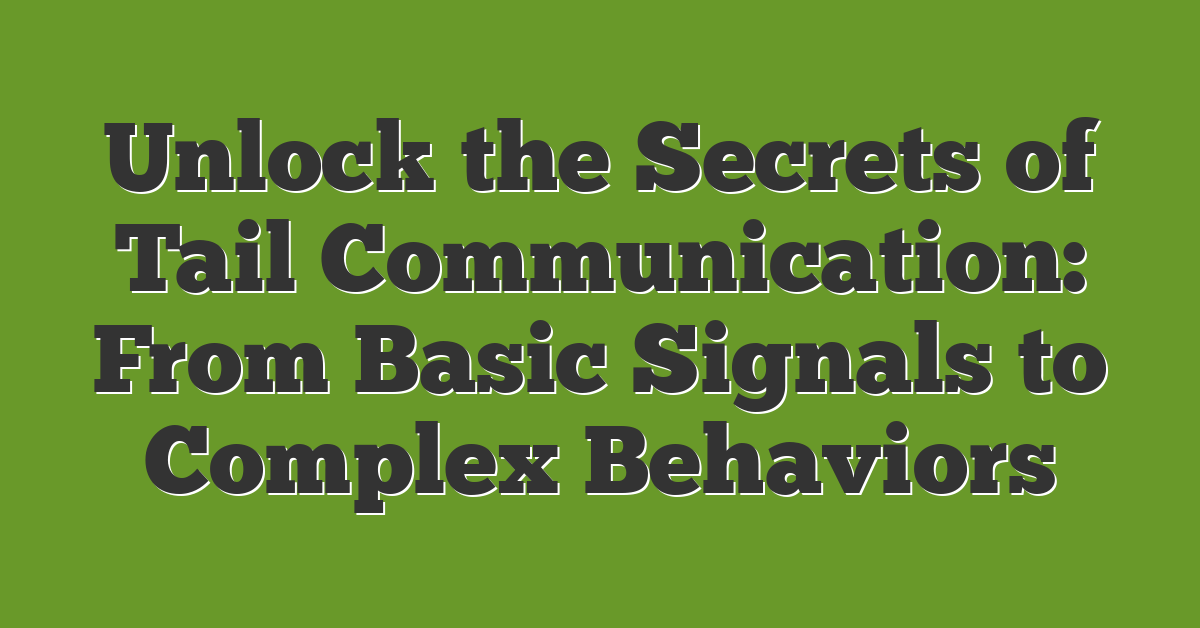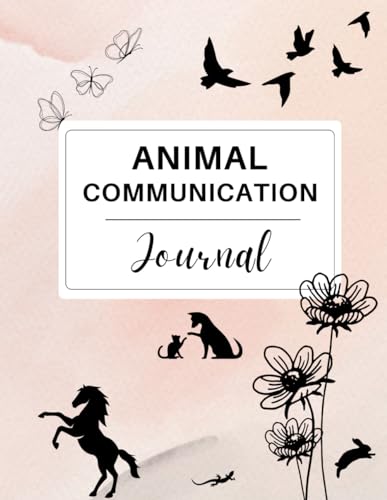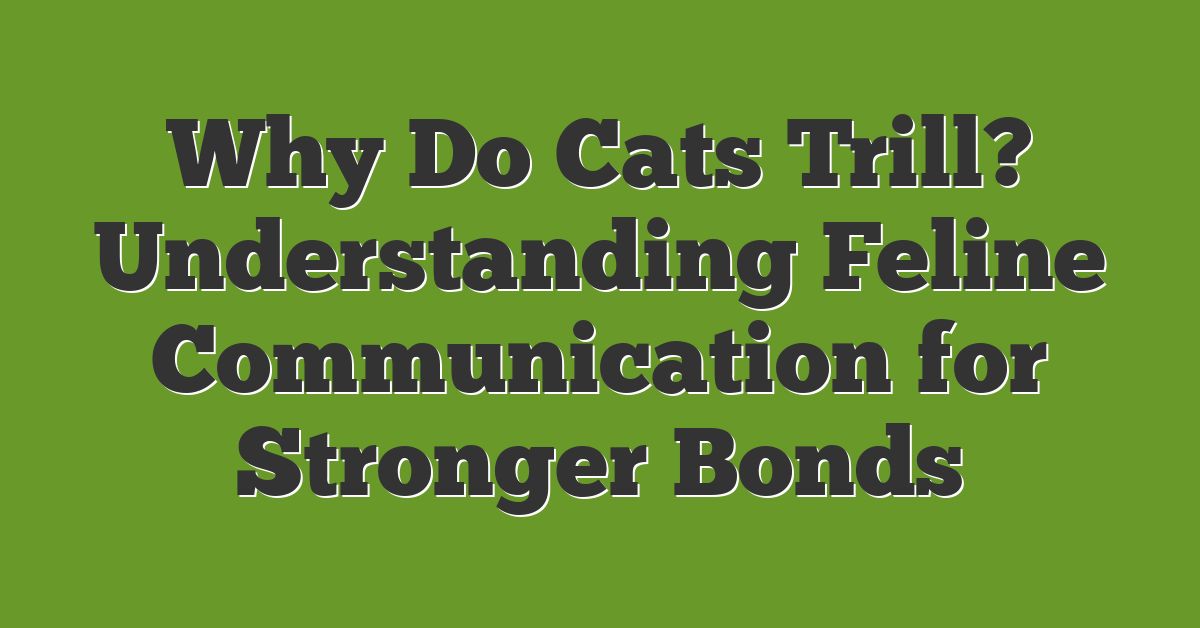Why Tails are Crucial in Animal Communication
If you’re a cat lover like me, you’ve probably been fascinated by the way cats use their tails to communicate. Cats are known for their graceful movements and expressive tails, which play a crucial role in their communication with other animals and even humans. Let’s explore why tails are so important in animal communication.
1. Expressing Emotions
Cats have a wide range of emotions, and their tails are like a visual language that expresses how they’re feeling. When a cat’s tail is held high and gently curved, it usually means they’re content and happy. On the other hand, if the tail is puffed up and bristling, it signals fear or aggression. By paying attention to your cat’s tail, you can understand their emotional state better and respond accordingly.
2. Conveying Intentions
Tails also help cats convey their intentions to other animals. If a cat’s tail is held upright and vibrating, it’s a friendly greeting. A slowly wagging tail can be a sign of curiosity, while a flicking tail may indicate impatience. By observing a cat’s tail movements, you can decipher their intentions and ensure a positive interaction.
3. Warning Signals
Cats use their tails to warn others when they’re feeling threatened or annoyed. A rapidly lashing tail is a clear sign that they want to be left alone. Similarly, a tail swishing vigorously from side to side can indicate annoyance or aggression. Understanding these warning signals can prevent potential conflicts and ensure the well-being of both cats and humans.
4. Balance and Coordination
While the primary function of a cat’s tail is communication, it also plays a role in their balance and coordination. When a cat leaps, twists, or lands, their tail helps them maintain stability and make precise movements. Think of it like a tightrope walker’s balancing pole. Without their tails, cats would find it much more challenging to navigate their environment gracefully.
So, as you can see, tails are not just long, fluffy appendages. For animals like cats, they are essential tools for expressing emotions, conveying intentions, and even maintaining balance. By paying attention to your cat’s tail, you can deepen your understanding of their communication and strengthen the bond you share. Keep observing and learning, and you’ll become an expert in deciphering your feline friend’s tail language.
Types of Tail Movements and Their Meanings
When it comes to understanding your beloved feline friend, decoding their tail language can unveil a world of insight. Cats have an incredible knack for using their tails to communicate their thoughts and feelings. Here are some common types of tail movements and their meanings:
1. Straight Up: When your cat holds their tail straight up in the air, it’s a sign of confidence and happiness. It’s their way of saying, “I’m feeling good!”
2. Puffed Up: If your cat’s tail is puffed up like a bottle brush, it’s a clear indication that they feel threatened or scared. They are trying to appear larger to intimidate potential threats.
3. Flicking Tail: A tail that flicks back and forth swiftly usually indicates agitation or annoyance. Pay attention to the context; it could be a sign that your cat wants some space or is irritated with something or someone.
4. Curved Tail: When your cat’s tail is curved like the letter “C,” they are displaying a friendly and relaxed attitude. It’s their way of saying, “I’m open to interaction.”
5. Twitching Tail Tip: If you notice your cat’s tail tip twitching, they might be in a playful mood. They may be telling you that they’re ready for some playtime and would appreciate a little bit of fun.
6. Wrapped Around You: When your cat wraps their tail around you, they are showing affection and trust. It’s like a warm hug from your furry companion.
Understanding these tail movements and their meanings can help deepen your bond with your feline friend. It allows you to respond appropriately to their needs and emotions, fostering a stronger connection between you. So next time you see your cat’s tail moving, pay attention and respond accordingly. Remember, their tail is their voice, and by listening, you’ll become fluent in their silent language. Enjoy the wonderful world of tail communication with your furry friend!
Keep reading to explore how tails also play a vital role in your cat’s balance and coordination…
The Importance of Tail Communication in the Animal Kingdom
If you’re a cat lover, you probably know that cats can communicate in many ways, and their tails play a crucial role in this. Tail communication is not only unique to cats but is also seen in other animals in the animal kingdom. Understanding tail movements can help you better interpret their feelings and thoughts. Here’s why tail communication is so important:
- Expression of emotions: Cats use their tails to express a wide range of emotions, from happiness to fear. A straight up tail often indicates confidence and contentment. On the other hand, a puffed up tail is a clear sign of fear or threat. By recognizing these tail movements, you can gain insights into how your feline friend is feeling.
- Establishing social bonds: Tail communication is essential for cats when they interact with other animals, including humans. When a cat approaches you with a gently swaying tail, it’s a sign of friendliness and trust. Conversely, a rapidly flicking tail indicates agitation or annoyance, signaling that it’s best to give them some space.
- Enhancing human-cat relationship: By understanding tail communication, you can strengthen the bond between you and your furry companion. Responding appropriately to their tail movements shows that you respect their boundaries and emotions. This, in turn, will make your cat feel more secure and deepen your connection.
- Observing health and well-being: Changes in tail movements can also indicate potential health issues. For example, a limp or limp tail could be a sign of injury, while excessive twitching may indicate a neurological problem. Paying attention to these changes can prompt you to seek veterinary care promptly.
- Learning from the animal kingdom: Tail communication is not unique to just cats. Many other animals also rely on their tails to express themselves. For example, a dog wagging its tail may indicate excitement or happiness, while a rattlesnake shaking its rattles warns of danger. By understanding these tail movements, we can better appreciate and communicate with animals of all kinds.
Examples of Tail Communication in Different Species
When it comes to tail communication, cats are not the only ones who have mastered this skill. In fact, many different species in the animal kingdom use their tails to express themselves. Here are some examples:
Dogs: Just like cats, dogs use their tails to communicate their emotions. A wagging tail often indicates happiness and excitement, while a low and tucked tail can mean fear or submission. Pay attention to the speed and direction of a dog’s tail wag, as it can give you valuable insights into their mood.
Horses: Horses are magnificent creatures with powerful tails that convey their feelings. A relaxed and loose tail indicates that a horse is calm and content. On the other hand, a swishing or raised tail might indicate irritation or aggression. If you’re ever around horses, it’s important to be aware of their tail language to ensure a safe and harmonious interaction.
Squirrels: These nimble little creatures use their fluffy tails as a tool of communication. A squirrel’s tail is not only for balance but also for sending messages to other squirrels. A twitching tail can signal alertness, while a flicking tail may indicate agitation or irritation. So, the next time you spot a squirrel, pay attention to its tail to understand its state of mind.
Lizards: Lizards may not have long, fluffy tails like cats, but they still use their tails to communicate. Some lizards curl or wave their tails to show aggression or territoriality. Others may use their tails to distract predators or even detach them as a defense mechanism. These unique tail behaviors are fascinating to observe and study.
Birds: Tail communication is not limited to mammals. Birds, too, have their own way of conveying messages through their tails. For instance, a bird may spread its tail feathers to display courtship or dominance. A tucked tail can indicate fear or submission. So, if you’re a birdwatcher, keep an eye on their tails to better understand their behavior.
As you can see, tail communication is a widespread phenomenon in the animal kingdom. Paying attention to these subtle cues can help you better understand and connect with different species, whether it’s a furry feline friend or a majestic horse. Remember, respecting their boundaries and emotions is key to building a strong bond with any animal. Let’s continue exploring the fascinating world of tail communication together.
Evolving Tail Communication: From Basic Signals to Complex Behaviors
As a cat lover, you may already know that cats use their tails to communicate. But did you know that tail communication has evolved over time, from basic signals to complex behaviors? Let’s dive into the fascinating world of tail communication in cats.
Basic Tail Signals:
Cats use their tails to express a range of emotions and intentions. Understanding these basic signals can help you better understand your feline friend:
- Tail Up: When a cat’s tail is held high, it’s a sign of friendliness and confidence. It’s their way of saying, “Hello!”
- Tail Straight Out: A cat with its tail extended straight out is in a neutral or content state. They feel relaxed and comfortable.
- Tail Puffed Up: A puffed-up tail indicates fear or aggression. Your cat might be feeling threatened or defensive. It’s best to give them space in these situations.
Complex Tail Behaviors:
Cats also use their tails to communicate more complex behaviors and messages:
- Tail Flicking: If your cat’s tail is twitching or flicking, it usually means they’re irritated. It’s a warning sign that they may not be in the mood for petting or play.
- Tail Wrapping: When a cat wraps its tail around another object or their own body, it’s a sign of comfort and relaxation. It’s their way of creating a sense of security.
- Tail Lashing: A cat’s rapid tail lashing is often a sign of agitation or anger. They may be feeling threatened or frustrated. It’s best to give them space until they calm down.
Tail Communication Misconceptions:
It’s important to address some common misconceptions about tail communication in cats:
- Tail Wagging: Unlike dogs, tail wagging in cats does not always indicate happiness. In cats, a wagging tail can mean they are agitated or annoyed. Pay attention to other body language cues to interpret their mood accurately.
- Taillessness: Some cat breeds have naturally short or no tails, like the Manx or the Bobtail. While their tail may be absent, these cats have developed other ways to communicate through body language and vocalizations.
Conclusion
Understanding tail communication in cats is an essential aspect of decoding their emotions and intentions. Throughout this article, we explored the diverse range of tail signals that cats utilize to express themselves.
From a high-held tail indicating friendliness and confidence to a puffed-up tail signifying fear or aggression, it’s fascinating to witness how cats communicate through their tails. Additionally, we learned about more intricate tail behaviors like flicking when irritated and wrapping when comfortable and relaxed.
It’s crucial to debunk common misconceptions, such as assuming that tail wagging always signifies happiness in cats. By recognizing the nuances of tail communication, we can better comprehend our feline companions.
Even though some cat breeds have naturally short or no tails, they still possess alternative methods of communication through body language and vocalizations. By paying attention to these cues, we can establish a deeper connection with our furry friends.
Remember, observing and understanding tail communication is a valuable tool in deciphering the complex world of cats. So, keep an eye on those tails and embrace the wonders of feline communication!
Frequently Asked Questions
Q: What does it mean when a cat’s tail is held high?
A: When a cat holds its tail high, it typically indicates friendliness and confidence.
Q: What does it mean when a cat’s tail is straight out?
A: When a cat’s tail is straight out, it usually indicates a neutral or content state.
Q: What does it mean when a cat’s tail is puffed up?
A: A puffed-up tail in a cat usually indicates fear or aggression.
Q: What does it mean when a cat’s tail is flicking?
A: When a cat’s tail is flicking, it typically indicates irritation.
Q: What does it mean when a cat’s tail is wrapped around its body?
A: When a cat’s tail is wrapped around its body, it indicates comfort and relaxation.
Q: Does tail wagging always indicate happiness in cats?
A: No, tail wagging does not always indicate happiness in cats. It can have different meanings depending on the context and other body language signals.
Q: Do all cats have tails?
A: No, some cat breeds have naturally short or no tails. However, they still communicate through body language and vocalizations.

















